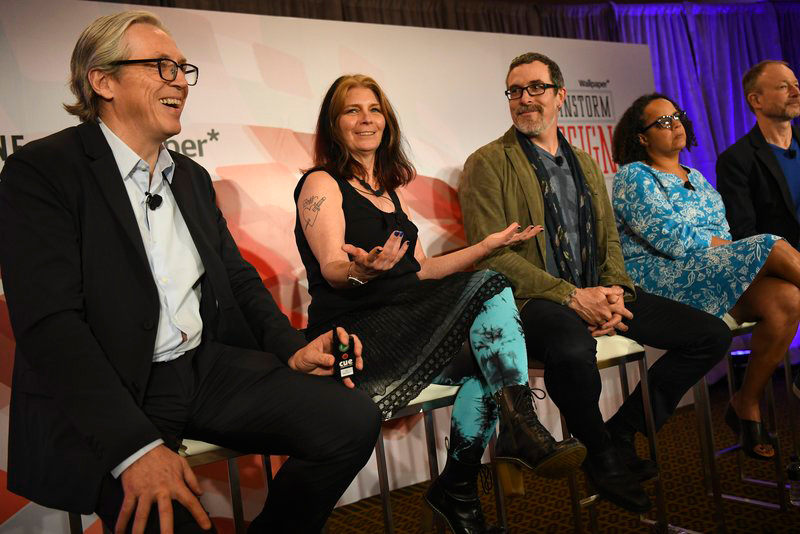大公司需要更好的设计业务领导,原因何在?

|
在过去5年中,共有50多个顶级设计和创新公司被其他公司收购。但该领域的多位领袖称,各大公司通常在新项目收购之时感到十分纠结,而且难以有效领导其设计团队。
他们在不久前新加坡《财富》头脑风暴设计大会的圆桌会议上讨论了设计业务的领导力问题。
玛利亚·茱蒂丝说:“有关如何成为好领导的培训并不多,但有关如何成为好经理的培训却有一大堆。”在玛利亚的帮助下,体验设计公司Hot Studio从两个人发展为一家全服务机构,后被Facebook收购。
她还指出:“领导者通常从经理中产生,但这些经理并不一定真的了解这两个角色之间的细微差别和区别。”她认为成功的设计职业并不仅仅是为了满足关键指标。
Invisible Design负责人哈里·韦斯特认为,大型机构通常缺乏设计业务领导者,可能也反映了人们普遍缺乏对设计内容的理解。
他说:“设计是一个非常宽泛的词。人们对它的理解往往过于简化,而且大型机构会说,‘我们需要一些设计业务:你去做吧。’”
Salesforce产品设计与用户体验执行副总裁贾斯丁·马奎表示,设计业务领导者应多花一点时间了解他们希望执掌的机构,甚至可能包括采用一些重要的设计方法。
他说:“在我心目中,这类领导首先应该在公司内部启用一个人种学流程。”同时他还承认,很多公司可能并不会聘用那些希望在正式开展业务之前执行6个月研究流程的领导者。
但马奎的同事、用户洞见与分析业务副总裁纳里尼·科塔拉珠并不认为领导设计创意业务与领导其他职业有什么太大的区别。
她对观众说:“我一开始就怀疑‘什么让设计师认为自己是如此特别’?”。她的这一论断迎来了一阵掌声。
哈里·韦斯特认为,这种区别很小,因为设计师更注重职业满足感,而不是金钱。
科塔拉珠并不赞同这一说法,她说:“数据科学家、工程师和统计学家亦是如此,我们都在寻找工作的意义。”
很多公司从其他领域引进人才,或试图花钱收购相关机构来解决设计业务困境。多名小组成员援引了业务整合奏效的案例。但马奎表示,在这一过程中保持谨慎的态度十分重要。
它说:“在Facebook行得通的设计和创新文化对于微软来说可能就行不通。”
韦斯特说,不用担心,各大在收购机构和管理其设计部门方面正逐渐变得更加得心应手。
他说:“最终,人们将变得更加明智,而且会更加理智地对待收购的对象。”(财富中文网) 译者:冯丰 审校:夏林 |
In the last five years, there have been more than 50 acquisitions of top design and innovation firms. But several leaders in the field say companies often struggle with new acquisitions and fail to provide their design teams with leadership.
They made the comments at a roundtable discussion about design leadership last Wednesday at the Fortune Brainstorm Design conference in Singapore.
“There’s not a lot of training to be a good leader. There’s tons of training about how to be a great manager,” said Maria Giudice, who built experience design firm Hot Studio from a two-person company to a full-service agency before it was acquired by Facebook.
“Oftentimes there’s a manager who gets elevated to become a leader, but they don’t really understand the nuances and the differences between [the roles],” she added, suggesting that a successful design career was about more than meeting key metrics.
Harry West, principal at Invisible Design, agreed that design leadership is often lacking in large organizations, perhaps reflecting a broader lack of understanding about what design entails.
“Design’s a very big word,” he said. “Too often it just gets overly simplified and a large organization says, ‘We need some of that D stuff: You’ll do.'”
Justin Maguire, EVP of Product Design and User Experience at Salesforce, said design leaders should spend a little more time finding out about the organizations they hope to lead, perhaps even applying some key design methodologies.
“I’d be looking for someone whose first step is to almost run an ethnographic process internally,” he said, while acknowledging that many companies might balk at a leader who wants to conduct a six month research process before getting down to business.
But Maguire’s colleague Nalini Kotamraju, VP for User Insights and Analytics, wasn’t so convinced that leading design creatives is significantly different than leading other professionals.
“I have the natural skepticism of, ‘What makes designers think they’re so special’?” she told the audience to some applause.
Harry West suggested that designers were a little different because they placed a greater emphasis on professional satisfaction than on money.
Kotamraju disagreed. “So do data scientists, so do engineers, so do statisticians,” she said. “We are all looking for meaning in our work.”
Many companies bring in talent from elsewhere or try to buy their way out of design dilemmas by acquiring an agency. Several panelists cited examples of where integrations had worked well. But Maguire said it’s important to tread carefully.
“What works for the culture of design and innovation at Facebook is probably horrific at Microsoft,” he said.
Not to worry. Companies are becoming savvier about buying agencies and managing their design departments, West said.
“Eventually,” he said, “people will wise up and become smarter about what they’re buying.” |













